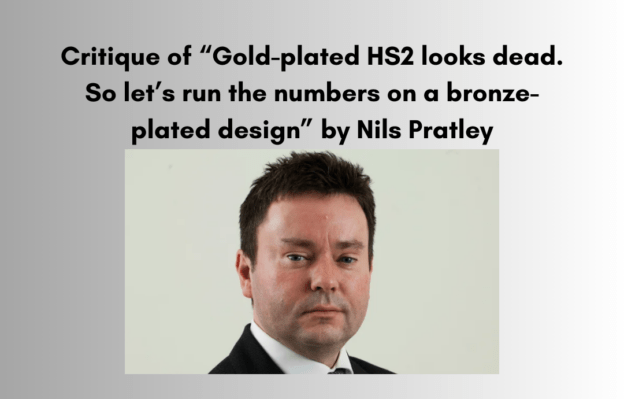Brief critique and analysis of “Gold-plated HS2 looks dead. So let’s run the numbers on a bronze-plated design”, by Nils Pratley…
Precis
Nils Pratley scrutinizes the cost inefficiencies and subsequent alterations to the High Speed 2 (HS2) rail project. Initially designed to enhance connectivity from London to northern cities, escalating costs have led to a reduced scope, sparking debate on the project’s value. Pratley suggests considering a less expensive design to salvage the initiative’s primary objectives while criticizing the government’s inconsistent oversight and lack of updated financial reporting concerning the project.
Critical Analysis
- Objectivity and Truthfulness:
- The article provides a well-detailed historical context of the HS2 project, accurately tracing its initial ambitious goals to its current watered-down state due to escalating costs. This provides a clear picture of the problem at hand.
- Pratley references legitimate sources like the review by Sir Douglas Oakervee and the Infrastructure and Projects Authority’s rating, which adds credibility to his arguments.
- Subjectivity and Weaknesses:
- There’s a noticeable bias as Pratley portrays the HS2 project mostly in a negative light. The article could be enriched by discussing any potential benefits or support that HS2 has received, to provide a balanced view.
- The suggestion of a “bronze-plated” design is presented without much data or expert opinions backing the feasibility or the savings such a redesign could offer. This aspect of the argument seems more speculative.
- Pratley criticizes the lack of updated financial reports but doesn’t provide a solution for improving transparency or suggest how regular financial updates could impact the project’s progress or public perception positively.
- Recommendations
- To improve the article’s balance, it would be beneficial to include arguments from HS2 proponents, possibly outlining how the project might still fulfill its objectives or the economic benefits it could bring in the long term.
- Exploring expert opinions or case studies on alternative, cost-effective design modifications could strengthen the argument for a “bronze-plated” design.
- Proposing concrete steps towards better financial transparency and efficient governmental oversight could provide readers with a more solution-oriented perspective.
- Recommendations on the Situation Described:
- It may be worth considering conducting a new, unbiased economic analysis of the project to understand better the cost-to-benefit ratio in its current state.
- Engaging with stakeholders, including the general public, in a more transparent manner regarding the project’s financials and progress could help in restoring trust and making more informed decisions moving forward.
- Exploring partnerships with private entities might be a way to share the financial burden and bring in expertise that could help in streamlining the project and reducing costs.
Conclusion
The article succeeds in highlighting the HS2 project’s current predicament due to escalating costs and reduced scope. However, it slightly falls short in providing a balanced view and actionable solutions to the problems discussed.
